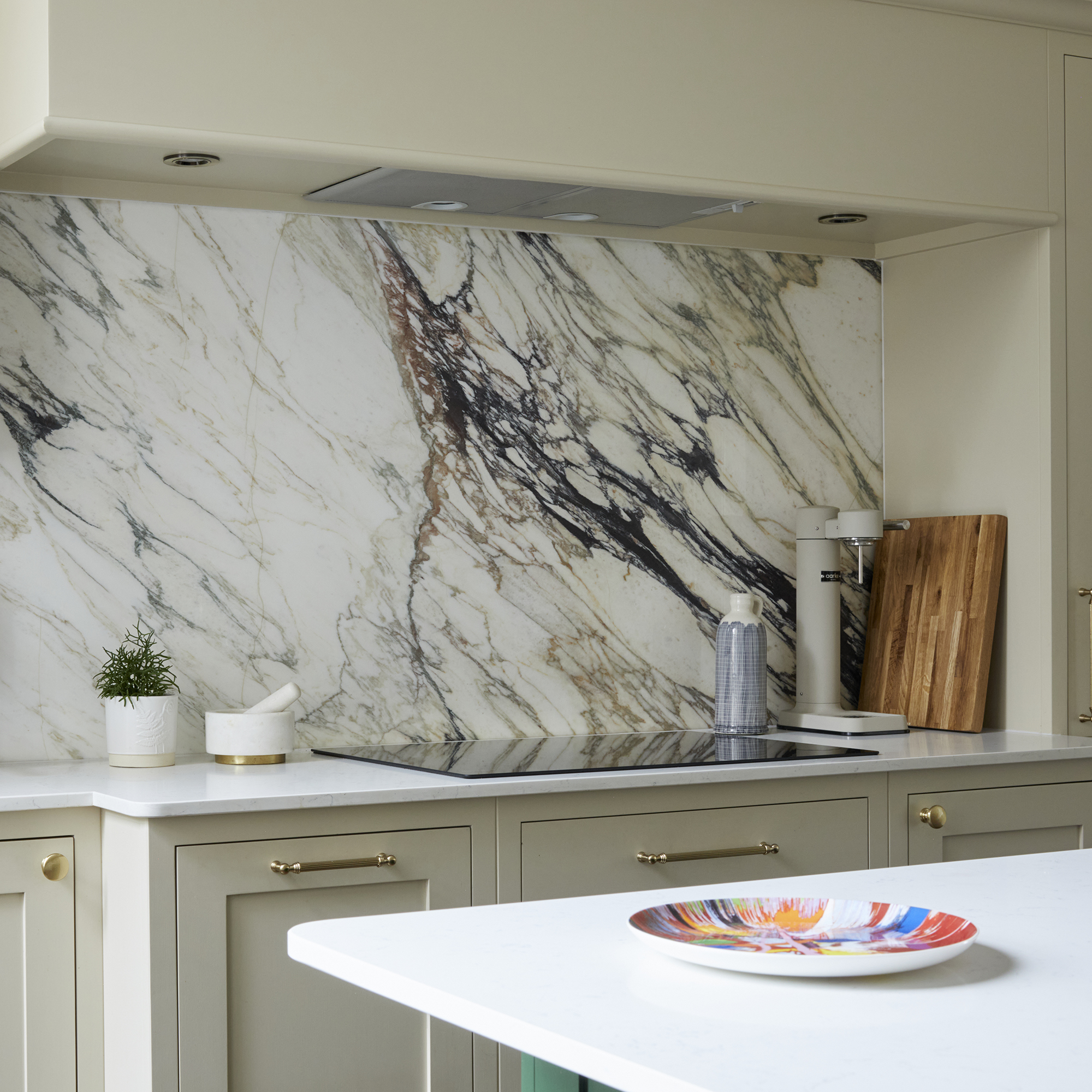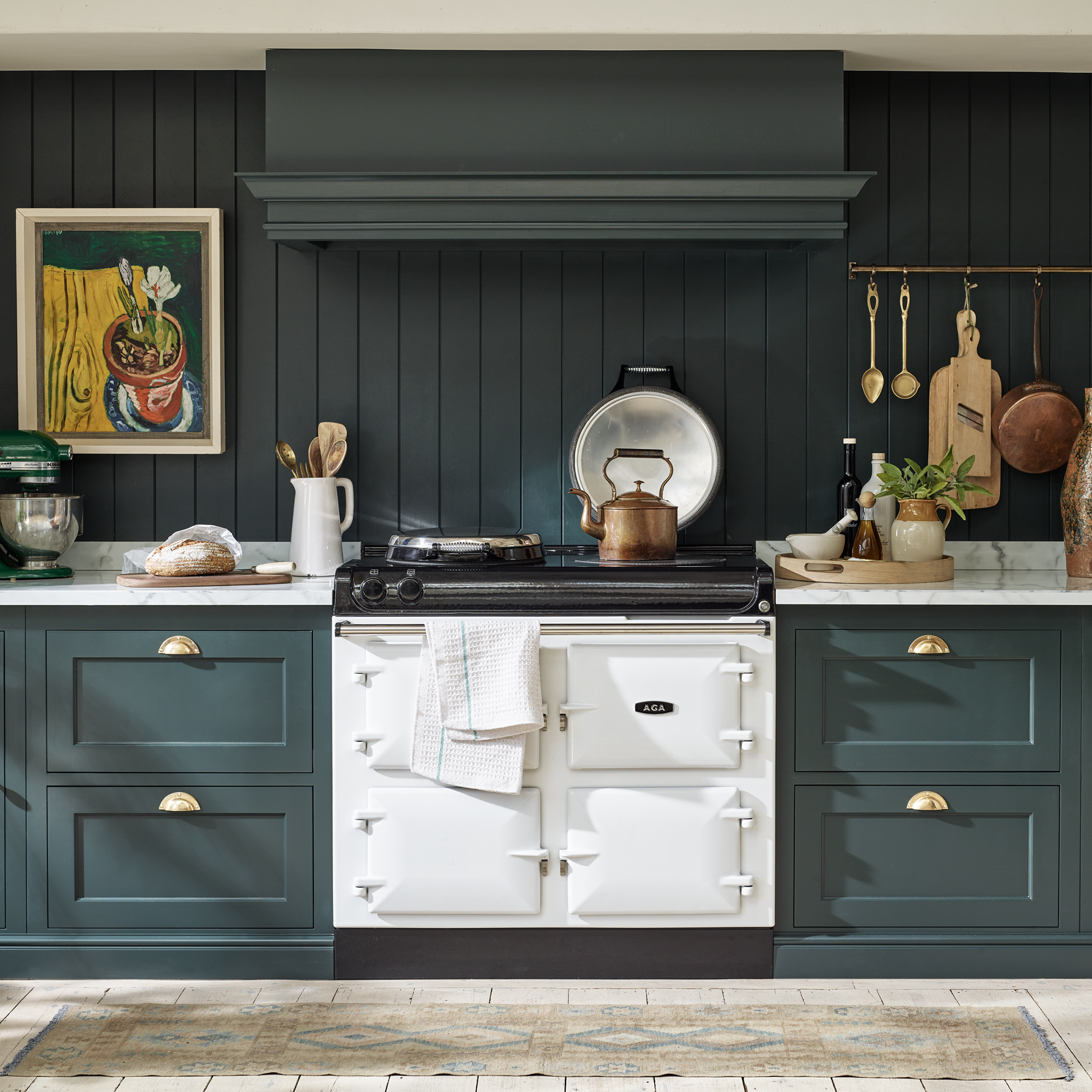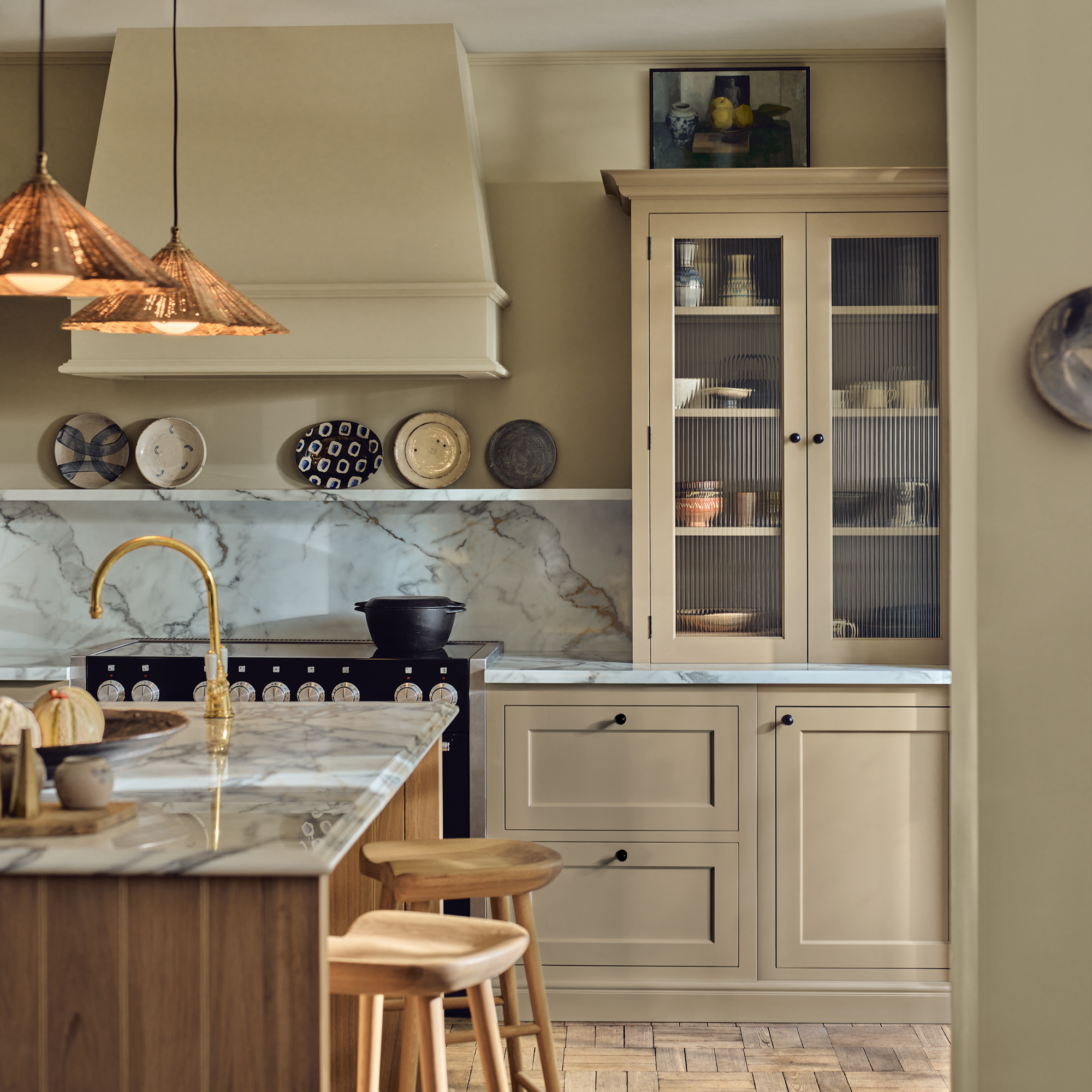How to hide an ugly extractor fan for a sleek and stylish kitchen
Extractor fans are necessary but not always chic - here's how to make them more aesthetically pleasing


- 1. Choose a downdraft extractor
- 2. Go for an extractor that sits flush to your ceiling
- 3. Embed your extractor into cabinetry
- 4. Choose a hob with built in extraction
- 5. Opt for an extractor fan that doubles up as a shelf
- 6. Colour match your extractor fan
- 7. Install an extractor fan that looks like a pendant light
- FAQs
When it comes to kitchen design, there has been a shift. Thanks to the rise in open-plan living, people are wanting kitchens that feel more like pleasant living spaces. A place to relax, socialise and unwind. In other words, more of us than ever are looking to design a kitchen that feels less kitchen-y.
There are so many kitchen ideas that you can use to create this laid-back kitchen look. But if there’s one thing that we hear people struggle with, it’s what to do about their extractor fan.
Traditionally quite a cumbersome and bulky feature, they can be an unwanted layout dictator, a view blocker and let’s face it, and bit of an eye sore. But, they are essential. So, we’re revealing how to hide an extractor fan – and there are seven key ways. From clever coverage to savvy built-in designs, create a chilled-out, airy kitchen vibe with one of these ideas.
How to hide an extractor fan
You shouldn’t underestimate the power of a good extractor fan. Lingering smells, grease on windows and clouds of steam are enough to turn the most beautiful of kitchens into a place you just don’t want to be.
Is it possible to have a good extractor fan that doesn’t dominate the room and take up a lot of space? It absolutely is. The technology behind extraction has come a long way in the past few years. So even the smallest, slimmest designs are surprisingly effective.
New modes of extraction mean that we can be more playful with our kitchen design too – no longer is our hob positioning limited to wall units. A hob built into our kitchen island can work so well, and the extraction needn’t be a problem…
1. Choose a downdraft extractor

A downdraft extractor is a great option for hiding your extractor away. ‘Downdraft extractors rise up out of the worktop when you need them, so not only do they remain out of view when you’re not cooking, they also don’t block sightlines when in use,’ says Simon Plumbridge, category manager at Gaggenau. This makes them especially popular for use in open plan spaces on kitchen islands.
Sign up to our newsletter for style inspiration, real homes, project and garden advice and shopping know-how
These extractors are built into your worktop. At the touch of a button, they rise up by around 20-25cm, and expel steam by pulling it away from your pan horizontally.
If you’re designing your kitchen from scratch, these are just as easy, if not easier, to install as traditional extractors. And while they look ultra modern and somewhat snazzy, they are more affordable than you might think.
Due to the nature of steam rising vertically, if you’re a very keen chef, a ceiling extractor may be a better option for capturing a lot of steam. But the difference is marginal, and these will work really well for most people.
For minimal visibility, choose a clear glass design, that appears barely there even when raised.
2. Go for an extractor that sits flush to your ceiling

A ceiling extractor fan sits flush to your ceiling, so that there is no bulky cylinder hanging down and obstructing your view throughout the room. This again is especially useful for placing above a kitchen island, so that you don’t visually divide up the room.
‘If your hob is on your kitchen island, it can be trickier to hide your extractor, but one way to do it is by installing a dropped ceiling over the island. From there, you can install a flushed extractor, where unless you look up, you won’t see it,’ says Richard Davonport, managing director at Davonport. ‘The dropped ceiling helps to hide it, and it also brings it closer to the hob. This is especially important to performance if you have very high ceilings.
‘Ceiling extractors ensure a nearly invisible appearance, while delivering high performance. They can also include task and ambient lighting, shedding light on your cooking right where you need it most,’ says Jo Sargent, director at Franke.
This option can be kind on the wallet too – ‘the simple and discreet design can be a more cost-effective option,’ says Melissa Klink, creative director at Harvey Jones. Simply choose a shade in the same colour as your ceiling for maximum camouflage.
3. Embed your extractor into cabinetry

A great way to hide your extractor fan in a modern or traditional kitchen is to build it into your cabinetry so that it looks like just an extra unit.
‘It is possible to house an extractor fan inside of a cabinet that matches some wall cabinets on either side giving the illusion of a standard run of storage cabinetry,’ says Molly Chandler, designer at Willis & Stone.
‘The ideal extractor fans to house inside cabinets and within chimney breasts are canopy hoods. They have a boxy shape, which sits perfectly within these appliance housings,’ says Molly.
You can paint this faux cabinet in the same shade as the rest of your units so that it blends in seamlessly with your kitchen. ‘Incorporating an overhead extractor fan into a continuous run of units above the hob is not only a great way to blend it in with the rest of your space, but it also helps to maximise storage space,’ says Freya Gibbons, senior kitchen designer and consultant at Husk.
4. Choose a hob with built in extraction

The ultimate way to hide your extractor is to not have an extractor fan at all! But instead to choose a hob that has built-in extraction. There are more and more extractor hobs becoming available, and while they might sound like a futuristic luxury, they’re not as expensive as you might imagine.
‘A hob with an integrated extractor allows you to have two products in one sleek design. Incredibly compact, they take up very little space and remove the need for a traditional hood, so it’s an ideal choice for smaller kitchens,’ says Tom Hopper, kitchens manager at Miele.
‘Hob extractors are probably the most flexible type of hidden extraction because they can be designed easily into any kitchen, whether in a single run of worktop or an expansive island unit. They are available in vented or re-circulatory mode which means they can go anywhere, a choice of widths to fit different cabinet sizes and they sit almost flush with the worksurface giving them a stylish and streamlined appearance,’ says Jo Sargent at Franke.
‘Integrated extractors are an option for both electric and some gas hobs, creating a sleek and seamless aesthetic,’ adds Melissa Klink at Harvey Jones.
5. Opt for an extractor fan that doubles up as a shelf

If covering up or camouflaging your extractor fan won’t work, you can go for a two-in-one design that doubles up as storage.
Especially well-suited to modern kitchens with an island, hanging a dropped shelf from the ceiling above your island is an attractive design feature in its own right. With an embedded extractor fan, you can hide the mechanism within the structure, along with extra lighting.
Often found in modern matt black finishes for a sleek and sophisticated scheme, it’s the perfect place to display plants and curate an interesting centrepiece to your space.
6. Colour match your extractor fan

Use colour to camouflage your extractor fan so that it fades into the background.
‘Painting the extractor housing in the same colour as the cabinetry or the walls, depending on where the appliance has been built, ensures that it will blend with the rest of the kitchen and does not create any statement to attract attention,’ says Molly at Willis & Stone.
Always ensure to use a paint that’s especially designed for the material you’re painting. If you’re painting a cabinetry, a wooden kitchen paint will ensure it can stand up to splashes.
If you’re painting an extractor hood, you’ll need to use a heat-resistant appliance paint.
7. Install an extractor fan that looks like a pendant light

Yes, you read that correctly. There are so many innovative design features out there to disguise the appearance of extractor fans. This includes contemporary designs that, to the unknowing eye, appear to be a stylish, statement pendant light, but will whip away steam as well as any other design.
An ideal solution if your hob is on your kitchen island, you can create a statement feature – and many have inbuilt lights too. It may not come as a surprise that these are a more expensive extractor fan option, but in a contemporary setting, they can elevate your scheme and bring a real luxurious edge.
FAQs
What extractor fan do I need for a kitchen?
The extractor fan you need will depend entirely on your space. There are two key types of extraction and it’s worth getting to understand them before you make a purchase.
‘Extraction fans can either be ducted or re-circulating,’ says Jayne Everett, co-founder and creative director at Naked Kitchens.
With ducted hoods, the air is taken away through a pipe and released outside. Whereas with re-circulation hoods, the air is extracted and filtered to remove odour and grease, and the clean air is released back into your kitchen.
‘Ducted hoods are generally deemed to be more efficient, but the newer re-circulation extractions are so good, there is not much difference between the two types,’ says Jayne.
The type you choose depends on how much you cook and how much steam your kitchen faces (if you’re a passionate chef who cooks daily, a ducted hob might be your best bet). It also depends on how accessible your extractor fan is to the outside. Installing a ducted hood could mean extra upheaval, whereas a recirculating hood is localised and straightforward to install.

Amelia has worked in interiors journalism and home styling since 2016. She was previously the Co-Editor of Real Homes magazine, and has worked across titles including House Beautiful, Homes & Gardens and Gardening Etc.